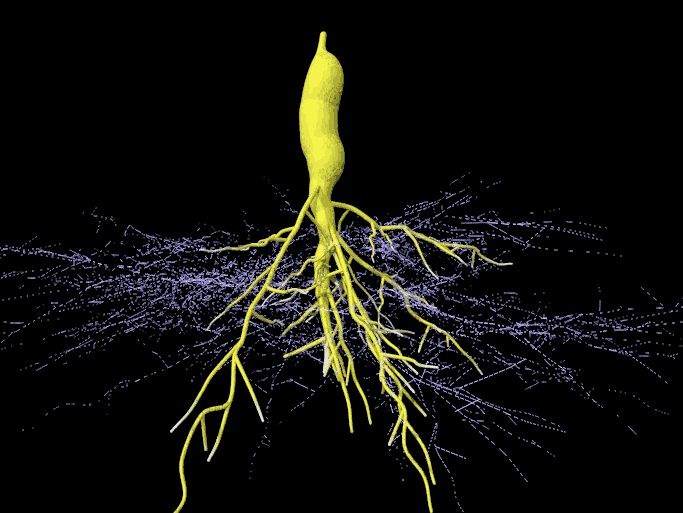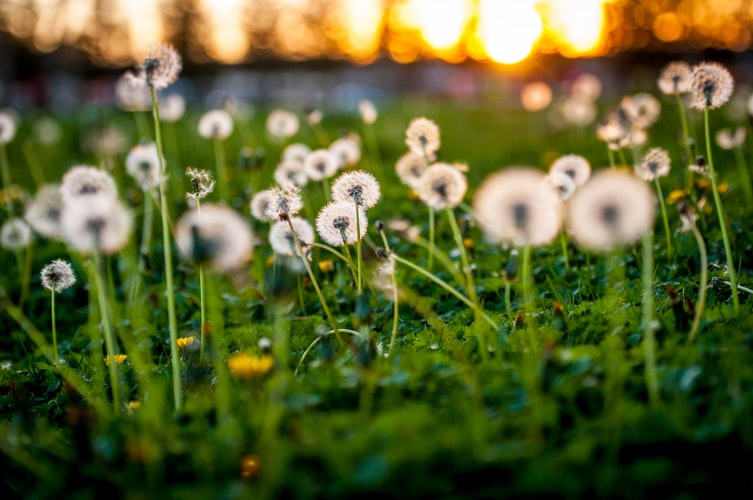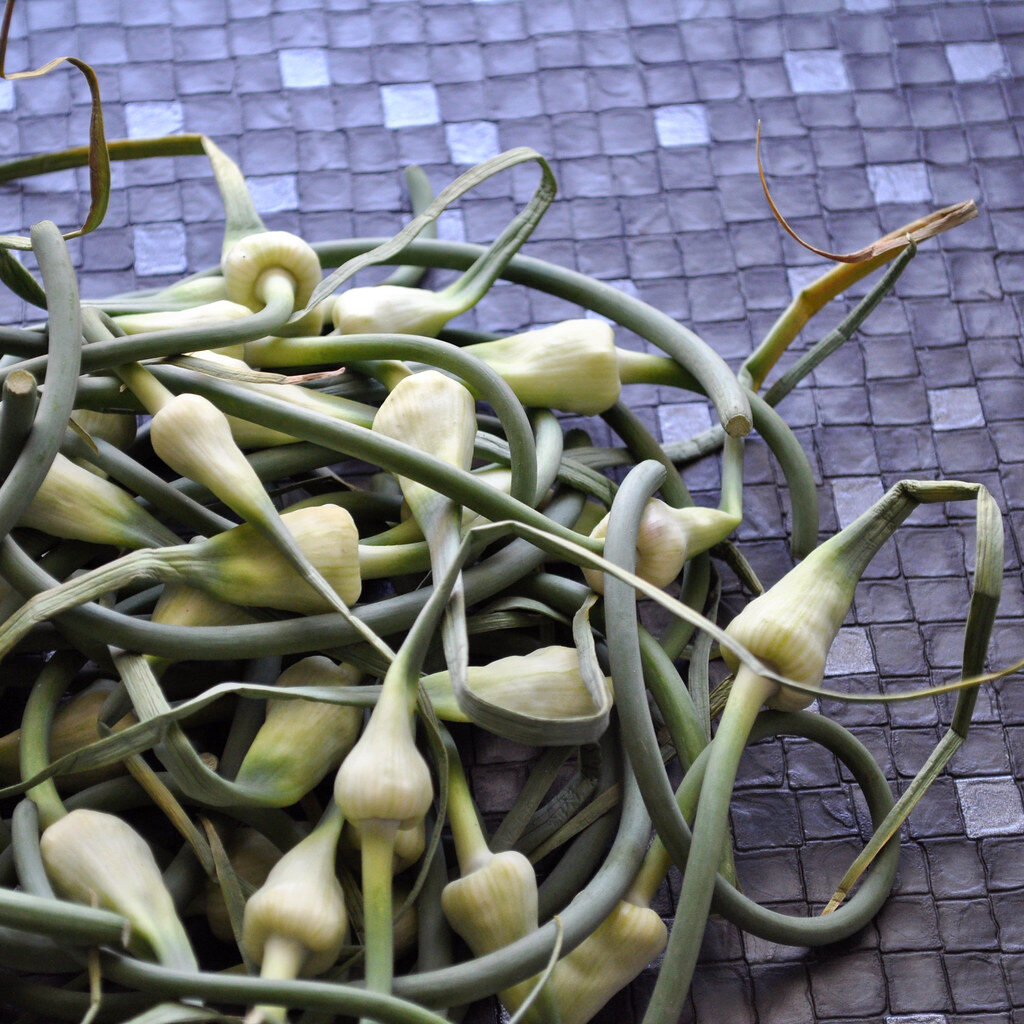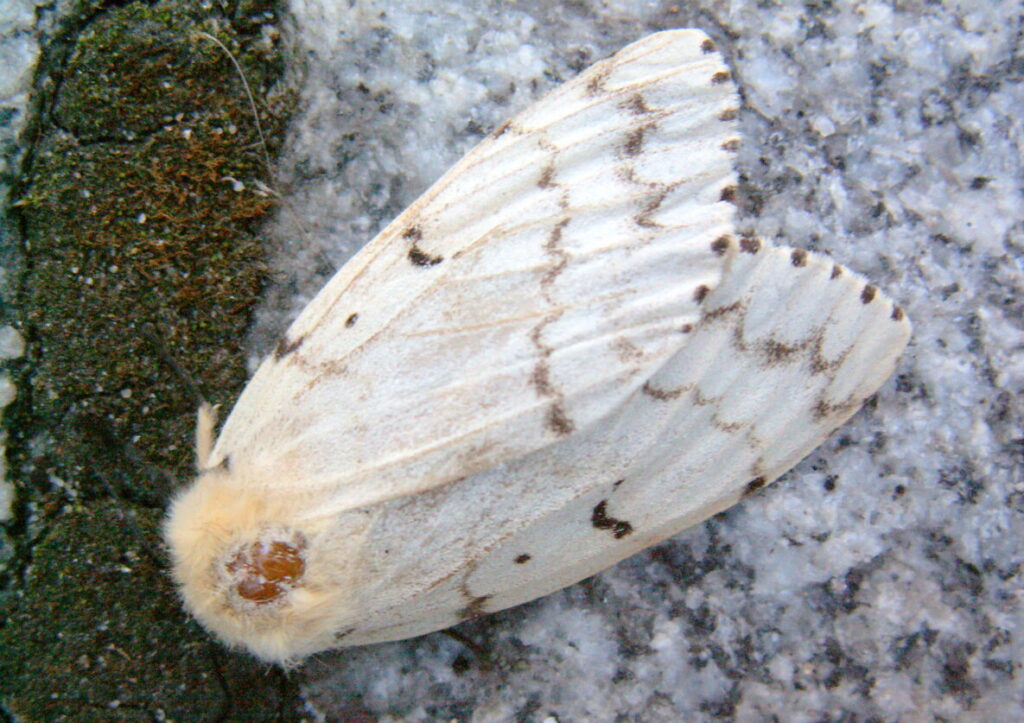
A simple potato recently participated in a study of beneficial bacteria in the soil.
How often do you consider the bacteria living in your soil as a means to improve plant health? A gram of soil (about one teaspoon) contains roughly 10 000 bacterial species distributed across one billion cells.
Even more amazing is that specific bacterial species from the soil thrive on the plants’ roots, causing the bacterial population on roots to be ten times higher than in the surrounding soil (or approximately 10 billion cells live on a gram of soil adjacent to the root).
Plant roots exude a carbohydrate-rich gel; up to 60% of the carbon fixed through photosynthesis is exuded from the roots. While many bacteria simply live on the root and eat the carbohydrates without providing a direct benefit to the plant, some types of bacteria provide useful products that promote plant growth. These products fall into two categories: biopesticides and biofertilizers.
Since soil bacteria are still poorly understood (we can only grow about 1% of these bacteria in the lab on petri plates!), it is difficult to create a beneficial community that will thrive on plant roots.
The Potato Experiment
In a recent study published in Soil Biology and Biochemistry (and cited below), I describe an experiment where we grew previously sterile potato plants in either forest soil (with a complex and diverse bacterial community) or agricultural soil (with a less diverse community).
After 15 days, we transplanted the potato plants into either the same soil (e.g. transplanted from forest soil to forest soil) or into the opposite soil (e.g. transplanted from forest soil to agricultural soil).We grew the plants for 30 more days then detected the types of bacteria on the roots.
Early Findings
We found that the first bacterial community that a root encounters establishes on the root and remains with the plant over 45 days, even if the plant is transplanted into different soil.
After we established that the bacterial community on potato roots was able to withstand the disturbance of transplantation, we then tried to establish a community of beneficial bacteria on young plants before transplanting into field soil. We focussed on nitrogen-fixing bacteria (NFB). This group of bacteria are able to take nitrogen gas from the atmosphere and produce nitrate, a form of nitrogen that is available to plants.
We grew NFB from potato field soil, then inoculated sterile potato plants. After 15 days, the plants were transplanted into agricultural field soil.
Plants inoculated with NFB at day 0 still had these bacteria on the roots at day 45 and these plants had fivefold more mass than uninoculated control plants.
Next Steps
More studies are planned to determine the ability of transplanted communities to thrive on plants grown in field conditions.
What’s the message for Home Gardeners?
We all need to realize the soil is alive and biologically complex. By considering this, we realize the importance of not just being on alert for the presence of pathogens, but also the presence of beneficial microorganisms.
The message of this paper is that if you had a soil that you knew was suppressive to disease or had a rich microbial community that was pathogen-free, you may try using this soil as an inoculum of your growth medium to support a functionally diverse bacterial community on plants that you start from seed.
Want to learn more? Here are some references and further reading
Berendsen, R.L., Pieterse, C.M.J., Bakker, P.A.H.M. 2012. The rhizosphere microbiome and plant health. Trends in Plant Science. 17: 478-486. A good review discussing plant growth promoting bacteria.
Turnbull, A.L, Campbell, I., Lazarovits, G. 2014. Resistance of bacterial communities in the potato rhizosphere to disturbance and its application to agroecology. Soil Biology and Biochemistry. 79: 125-131. This paper is the research described in the article.
submitted by Amy Turnbull, London Middlesex Master Gardeners





About The Author: Amy Turnbull
Scientist, researcher and professor at Fanshawe College. Avid grower of edibles in her home garden.
More posts by Amy Turnbull